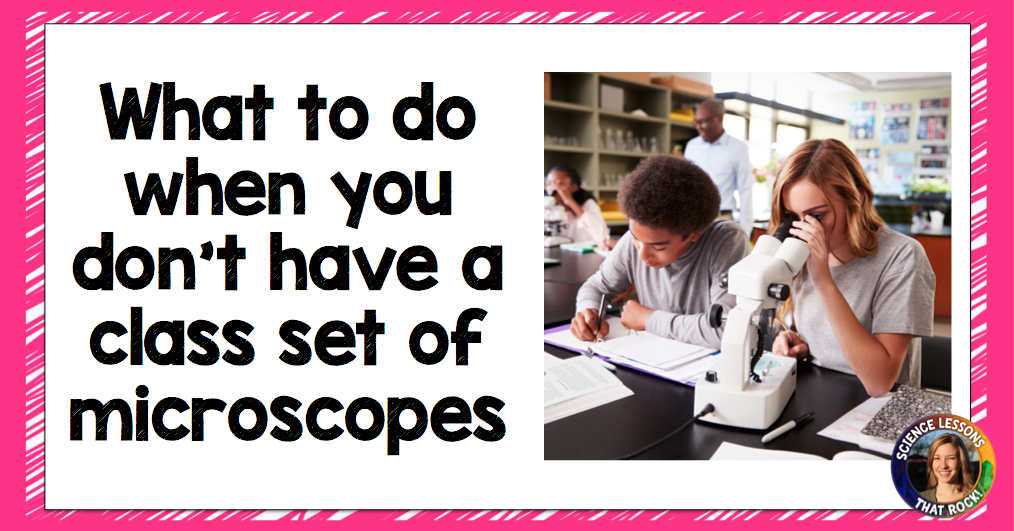1. HAVE HALF YOUR STUDENTS ON SCOPES
If you can’t get a full classroom set of microscopes, start with building up half a class set. When you are first teaching students how to use microscopes it can be TIRING. There is one of you and 30 of them all with their hands up asking for help. Only having half of your students on scopes greatly eases the tension. Try having half of your students on microscopes one day while the rest of the class is working on a different assignment and switch the next day. I much prefer this method over having students work in pairs because what ends up happening is one student hogs the microscope the whole time and the other student doesn’t get to learn how to effectively use it. (Here are some microscope worksheets you could have students work on while it’s not their turn at the scope).
Purchasing prepared slides can also break the bank. Check out this blog post on how to make your own!
2. VIRTUAL MICROSCOPE LABS
There are a couple virtual microscope labs available online you can have students check out. These are great for distance learning (or the half of the class that isn’t currently on the microscope!)
– My favorite is from BioNetwork. It doesn’t run on flash and has a variety of slides students can view.
– These labs from Univ of Delaware and NMSU are both great but run on flash, so be sure to check the sites on student devices before assigning.
3. FOLDSCOPES
Foldscopes are paper microscopes that magnify up to 140x (pretty impressive!) While I haven’t used them personally, I’ve heard great reviews from others. You can get 10 assembled foldscopes for $60 which is half the price of one compound microscope! Since they are lightweight and electricity-free you can have students take them outside and explore on-the-go.
4. PHONE APPS
One of the best features of a smart phone is the incredible cameras they come with. There are magnifying apps you can download that will allow students to zoom in with their camera to see small objects. A decent one to check out is called BigMagnify.
5. HAND LENSES AND POCKET MICROSCOPES
Don’t underestimate the power of a hand lens or pocket microscope! You can purchase decent pocket microscopes on Amazon for $10-$20 each. You obviously won’t get the same clarity as a compound microscope, but they are good if you are budget-strapped and need an alternative. When I first started teaching I only had a handful of compound microscopes, so I set up stations around the room that had different types of microscopes with different magnifications. Students could play around with magnifying glasses, pocket microscopes, stereoscopes, and a compound microscope and compare the magnification of each.
uHandy pocket microscope is also a great alternative- the lenses clip right on to phones or iPads. Check out this blog post to read more about the product.
I hope one of those options works for you and your students have fun exploring!









